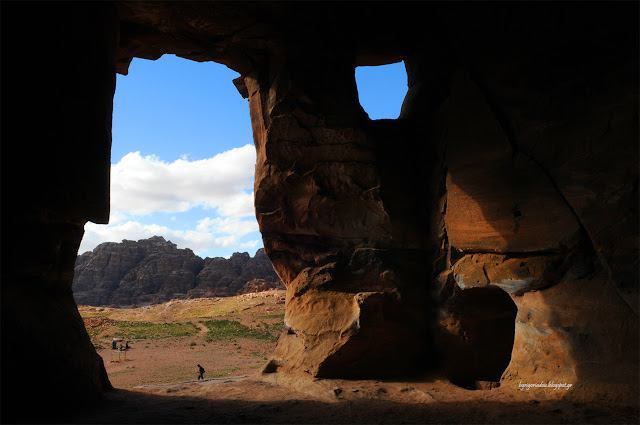“Petra, as the capital of the Nabataean Kingdom, thrived as an important trading post on the international Spice Route, serving as a crossroad between Arabia, Egypt, Palestine, Syria-Phoenicia, India, China, and the Mediterranean Basin. Nestled within intricate geological formation of mountains and gorges are the impressive tombs that the Nabataeans carved out of the sandstone rock faces. Nabataeans, Romans, and Byzantines built the city of Petra from the 2nd century BC to the 5th century AD. Whilst the architectural facades of the tombs are a harmonious blend of ancient Assyrian, Egyptian, Hellenistic, and Roman styles, archaeological excavation in Petra have brought to light that the city itself survived well into the Byzantine period.” — From information board of Visitors Center in Petra, Jordan.
Siq is one of the most interesting mile long walk you can take.
The geology of the Siq is impressive enough
These caves, tombs, and carvings on mountains look like paintings of nature.
The beauty doesn’t end anywhere… every corner has surprise, every rock of this valley has some uniqueness.
Various walks and climbs reveal hundreds of rock carved tombs and temple façades, funerary halls, and rock reliefs…enough to keep your eyes busy for hours and days.
Petra values
It conserves significant remains of the natural original vegetation and several endemic plants.
It conserves valuable natural assets, grandiose scenic values, striking geological values, and ecological and biological values.
It is home to a number of tribes, thereby preserving local traditions.
It provides economic value to both the country and the community through specialized approaches to tourism that incorporate its historical, artistic, ecological, geological, anthropological, hydrological and ritual values.
It is also provide income through employment within the park.
These six values make Petra unique in the world and in view of the magnitude an gravity of the dangers threatening the site, render it incumbent upon Jordan to protect and preserve its cultural and natural heritage of outstanding universal value for this and future generations.




















